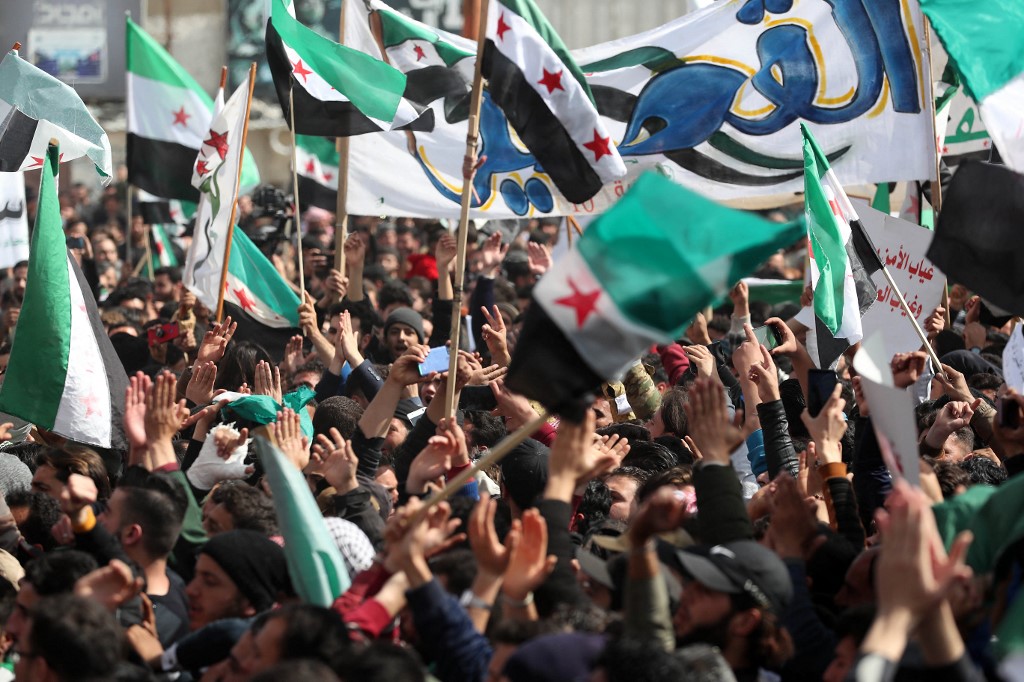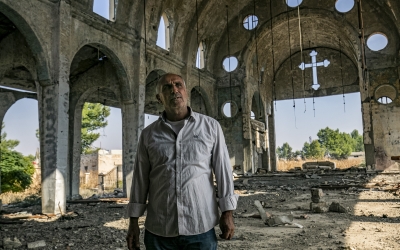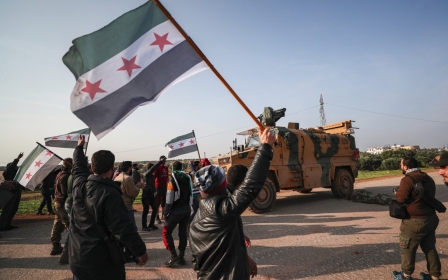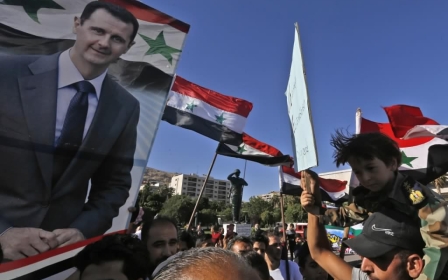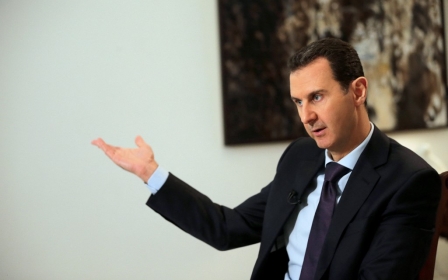Syria war: After a decade of bloodshed, revolutionary dreams live on

On the 10th anniversary of the Syrian revolution, which started with peaceful protests in 2011, Syrians are reflecting on the outcome of this difficult decade. Despite the calamitous war that has devastated the country, we are also witnessing the difficult birth of a new Syrian society.
The regime appears unable to grasp what has changed over the past decade
The current landscape is divided among three main spheres of influence: the Syrian opposition, which controls around 10 percent of the country after significant retreats in recent years; the Assad regime, which has regained control of around two-thirds of Syria; and the US-backed Syrian Democratic Forces (SDF), which holds the balance.
The war is estimated to have cost the Syrian economy more than $530bn, with 40 percent of the country's infrastructure destroyed and the poverty rate reaching 86 percent. More than half a million people have been killed and millions more are displaced, with around 2.4 million children being deprived of education.
Humanitarian crisis
Syrians have all paid a heavy price for these bloody 10 years, but opposition areas have suffered the heaviest toll. Syrian society is divided, with those in regime areas blaming the government for failing to secure basic needs such as food, while calling for improved education, power and healthcare and services. Some have even cautiously called for accountability for corrupt regime figures, although such voices have quieted after recent arrests and attacks targeting media figures.
New MEE newsletter: Jerusalem Dispatch
Sign up to get the latest insights and analysis on Israel-Palestine, alongside Turkey Unpacked and other MEE newsletters
Meanwhile, the millions of people living in opposition areas, many displaced from other parts of the country, face a humanitarian crisis and the constant threat of military bombardment.
And yet, despite these fears, Syrians in opposition-held areas recently staged mass demonstrations to mark the 10th anniversary of the revolution. Men, women and children; civilians, militants and politicians alike participated, and a statement signed by 60 groups was circulated, affirming their determination to overthrow the Assad regime and to hold those involved in war crimes accountable.
The statement calls for a transitional political process and the immediate release of detained Syrians, in addition to the establishment of a safe environment for displaced people to return to their towns and villages. It also rejects international attempts to normalise the Assad regime.
Flag of the revolution
Remarkably, demonstrations returned to a number of areas that had signed reconciliation agreements with the Assad regime in recent years. Demonstrators in Daraa hoisted the flag of Syrian revolution, while protests also took place in the Ghouta region. In addition, protesters in al-Raqqah and Deir Ezzor, both under SDF control, hailed the Syrian revolution.
Many might have thought that Syrians would have surrendered, or regretted challenging the Assad regime, in hopes of returning to how things were before 2011. But it was not only political demands that divided Syrian society; fractures have also become evident over the development of civil society and its capacity to organise.
In regime areas, despite the public suffering, fear, and extreme poverty, government officials continue to live in luxury, even as they face international sanctions. Still, despite regime pronouncements about retaking the country, their control appears fragile and superficial.
The regime appears unable to grasp what has changed over the past decade, and insists on bringing people back under its control using force. But people who have lived outside the regime's control for a while can no longer return to their previous lives under the same unjust conditions.
Hope for the future
In opposition areas, civil society is more dynamic, vibrant and aware than in regime areas. The recent peaceful demonstrations were well-organised, with artistic elements that included flags, slogans and graffiti messages expressing hope for the future that Syrians have long awaited.
While some of the graffiti was removed by an unknown group, the artists repainted it again, challenging these attempts to restrict their peaceful, free expression.
Syrians are determined to build a democratic and fair society... no matter what the costs
Despite the heavy losses that Syrians have suffered over the past 10 years, the hopes of the Syrian revolution remain alive, with the notions of freedom, human rights and respect for all people now deeply ingrained in the social consciousness. Syrians are determined to build a democratic and fair society, and to confront all those who stand in the way - no matter what the costs.
The views expressed in this article belong to the author and do not necessarily reflect the editorial policy of Middle East Eye.
Middle East Eye delivers independent and unrivalled coverage and analysis of the Middle East, North Africa and beyond. To learn more about republishing this content and the associated fees, please fill out this form. More about MEE can be found here.



